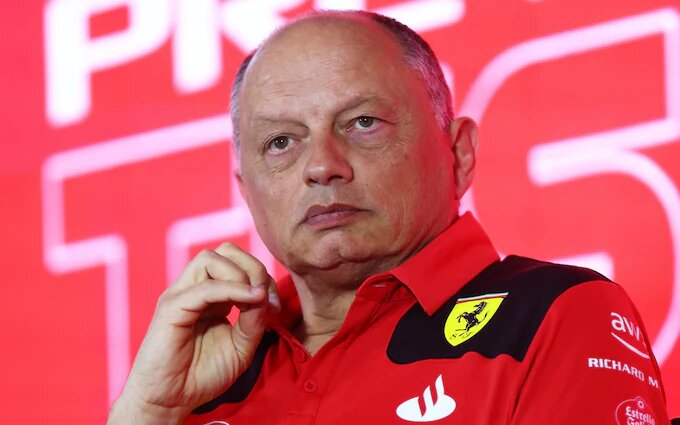sad news:ferrari f1 top driver loss his life during the champ…….
Bizarre reason explained behind Ferrari’s shock F1 slump
The major upgrade package on the Ferrari this year has not been integrated without problems, with the SF24 car proposing at high speed.
This has nothing to do with a miscorrelation between the simulator and on-track data, but is related to the fact that the upgrade works too well for the already existing platform of the SF24.
Ferrari has successfully managed to generate more downforce with the update package, consisting of a completely new floor in conjunction with a new diffuser.
Since the reintroduction of ground effect in 2022, the efficiency of the aerodynamic concept, where the most downforce is generated under the car, hinges on an equally efficient configuration of the suspension to counteract the bounce.
At Ferrari, that balance has been upset by the increased downforce, and it is very questionable whether the Ferrari’s existing concept offers inputs to compensate for that on the suspension side.
After all, the suspension of an F1 car is such an integral part of the whole concept of an F1 car that the smallest adjustments have a major impact on the overall performance of the car.
So, in the case of Ferrari, it fully succeeded in achieving the goal of more downforce, but should it have realized that it would come at the expense of something else? Perhaps not.
Since 2022, we have been told that the phenomenon of porpoising is extremely difficult to simulate, meaning it Ferrari could only realise it had missed the mark when the car hit the track.
However, the existing configuration of the suspension, both front and rear, is not adequately able to cope with the increased downforce levels, while the configuration of the suspension in its original capacity provided good balance.
Since the reintroduction of ground effect in 2022, the efficiency of the aerodynamic concept, where the most downforce is generated under the car, hinges on an equally efficient configuration of the suspension to counteract the bounce.

At Ferrari, that balance has been upset by the increased downforce, and it is very questionable whether the Ferrari’s existing concept offers inputs to compensate for that on the suspension side.
After all, the suspension of an F1 car is such an integral part of the whole concept of an F1 car that the smallest adjustments have a major impact on the overall performance of the car.
So, in the case of Ferrari, it fully succeeded in achieving the goal of more downforce, but should it have realized that it would come at the expense of something else? Perhaps not.
Since 2022, we have been told that the phenomenon of porpoising is extremely difficult to simulate, meaning it Ferrari could only realise it had missed the mark when the car hit the track

